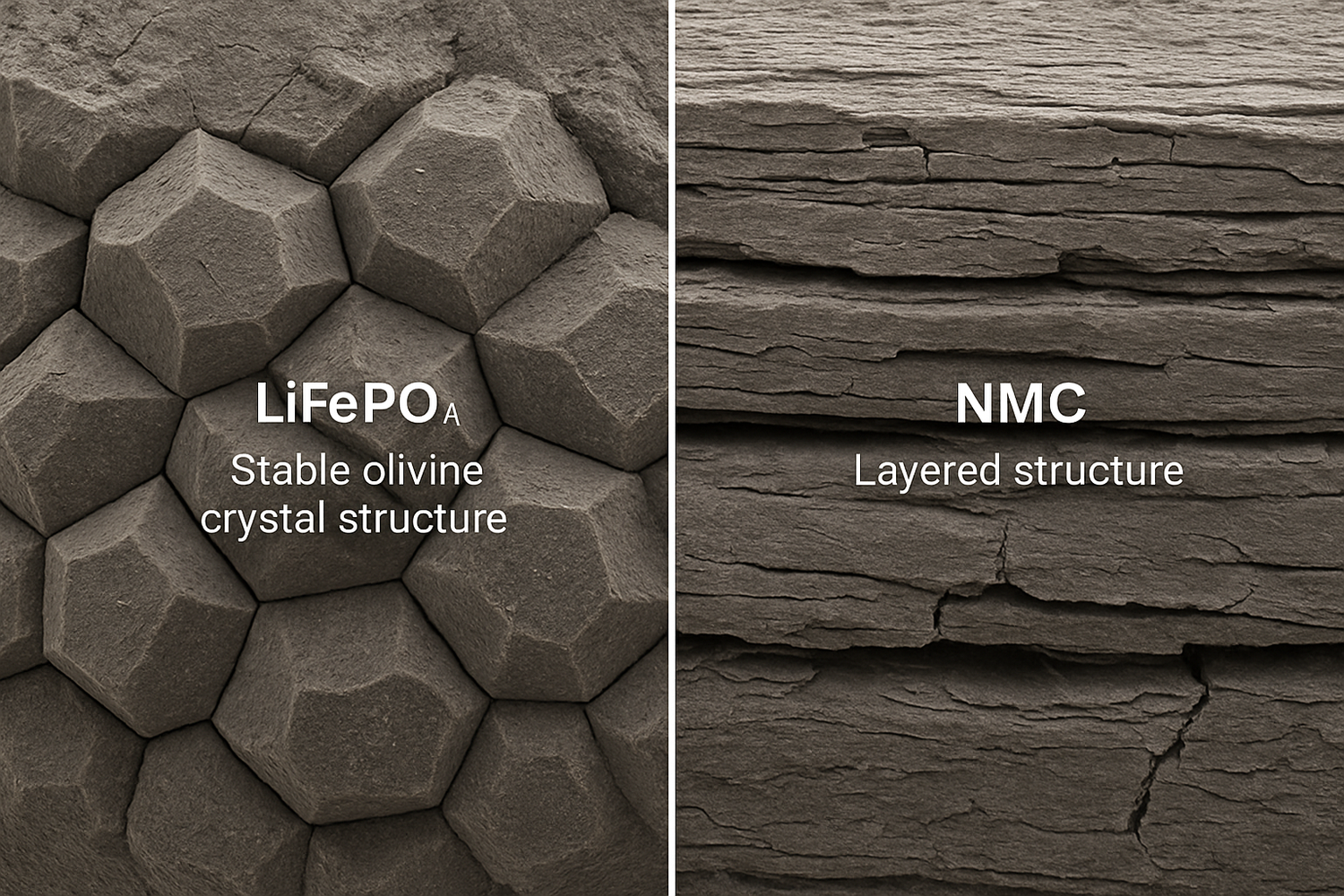Choosing a battery for your solar energy system is a significant decision. The battery is the core of your energy independence, storing power for use at night or during outages. While many types of lithium-ion batteries exist, the debate for solar storage often centers on Lithium Iron Phosphate (LiFePO4) versus other lithium-ion chemistries like Nickel Manganese Cobalt (NMC). The critical question is: which one lasts longer and provides better value over time? The answer lies in their fundamental chemistry and performance under real-world conditions.
Understanding Battery Lifespan: Cycle Life and Calendar Life
To compare battery longevity accurately, you need to look at two key metrics: cycle life and calendar life. They are not the same, and both are crucial for evaluating a solar battery investment.
What is Cycle Life?
Cycle life refers to the number of full charge and discharge cycles a battery can endure before its capacity drops to a certain percentage of its original rating, typically 80%. A cycle is one full discharge followed by a full charge. This metric is heavily influenced by the Depth of Discharge (DoD)—how much of the battery's capacity you use in each cycle. A shallower discharge generally leads to a much longer cycle life.
What is Calendar Life?
Calendar life is the total lifespan of a battery, whether it is being used or not. All batteries degrade over time due to chemical reactions, even when sitting idle. For a solar energy storage system, which may not be fully cycled every single day, calendar life is just as important as cycle life. Factors like ambient temperature and the battery's state of charge during periods of inactivity play a major role in determining its calendar life.
The Chemical Difference: Why Structure Matters for Longevity
The primary reason LiFePO4 batteries have a superior lifespan comes down to their molecular structure. The chemistry inside the battery cell dictates its stability, resilience, and overall durability.
The Stability of LiFePO4's Olivine Structure
LiFePO4 batteries use a phosphate-based cathode material that forms a strong, three-dimensional crystal structure known as an olivine structure. The phosphorus-oxygen bonds within this structure are incredibly stable. This stability means the material does not easily break down or degrade during the repeated process of lithium ions moving in and out of the cathode. It can withstand high temperatures and stress far better than other chemistries, which directly translates to a longer cycle life and enhanced safety by resisting thermal runaway.
The Layered Structure of Other Li-Ion Chemistries
In contrast, many other lithium-ion batteries, such as NMC or NCA, use a layered oxide structure. While this layered design allows for higher energy density—meaning more power in a smaller space—it is inherently less stable. Over time, with each charge and discharge cycle, this structure is more prone to micro-cracks and degradation. It is also more sensitive to high temperatures, which can accelerate capacity loss and pose greater safety risks. This structural vulnerability is the main reason for their shorter lifespan compared to LiFePO4.
Lifespan Under Real-World Solar Conditions: A Data-Driven Comparison
In a solar installation, batteries are subjected to daily cycles, fluctuating temperatures, and varying loads. Here is how LiFePO4 and other Li-ion chemistries stack up under these demanding conditions.
Impact of Depth of Discharge (DoD)
LiFePO4 batteries excel in deep-cycle applications. Their robust structure allows them to be discharged to 80% or even 100% DoD for thousands of cycles with minimal capacity loss. Other lithium-ion chemistries see their lifespan shorten dramatically with deeper discharges.
| Feature | LiFePO4 | Lithium-Ion (NMC/NCA) |
|---|---|---|
| Typical Cycle Life (80% DoD) | 4,000 - 8,000 cycles | 1,000 - 2,000 cycles |
| Typical Cycle Life (100% DoD) | 2,000 - 4,000 cycles | 500 - 1,000 cycles |
| Capacity Retention after 1000 cycles (80% DoD) | >90% | ~80-85% |
Temperature Sensitivity and Thermal Runaway
Solar batteries can be exposed to a wide range of temperatures. LiFePO4 chemistry is far more thermally stable. Its thermal runaway threshold—the point at which an uncontrollable, self-heating state begins—is around 270°C (518°F). In contrast, NMC batteries can enter thermal runaway at a much lower temperature of around 150°C (302°F). The U.S. Department of Energy highlights that this temperature varies significantly by chemistry, making LiFePO4 a much safer option for a home energy storage system.
Charging Efficiency and C-Rate
The C-rate measures the rate at which a battery is charged or discharged relative to its capacity. LiFePO4 batteries handle typical solar C-rates (0.2C to 0.5C) with less stress and degradation. They also boast a high round-trip efficiency, often exceeding 95%, meaning very little energy is lost during the storage and retrieval process. This efficiency contributes to better overall system performance and a longer operational life.
The Long-Term Value Proposition for Solar Energy Storage
While the initial purchase price is a factor, the true cost of a battery is revealed over its lifetime. A longer lifespan directly translates to better long-term value and a higher return on your investment.
Calculating Levelized Cost of Storage (LCOS)
A better way to evaluate battery cost is the Levelized Cost of Storage (LCOS), which is the total lifetime cost divided by the total energy the battery will deliver. Although LiFePO4 batteries can sometimes have a higher upfront cost, their significantly longer cycle life means they deliver far more energy over their lifespan. This results in a substantially lower LCOS, making them the more economical choice in the long run. For a deeper understanding of performance metrics, the ultimate reference on solar storage performance offers detailed calculations and insights.
Safety and Reliability in a Home Environment
The chemical stability of LiFePO4 is not just about longevity; it is also a critical safety feature. For a system installed in your home, safety is paramount. The reduced risk of thermal runaway provides peace of mind. As noted by the International Renewable Energy Agency (IRENA), ensuring the safety and reliability of battery storage is essential for its widespread adoption in residential settings.
Final Considerations for Your Solar System
When selecting a battery for your solar system, the evidence points clearly toward LiFePO4 as the superior choice for longevity and safety. While other lithium-ion chemistries offer higher energy density, this advantage is more relevant for portable electronics and electric vehicles where space and weight are primary constraints. For stationary solar storage, the priorities are durability, safety, and long-term value. A LiFePO4 battery's ability to deliver thousands of deep cycles, operate safely across a wide temperature range, and provide a lower total cost of ownership makes it a sound investment in your energy future.
Frequently Asked Questions
Is LiFePO4 always better than other lithium-ion batteries?
Not for every application. For devices where weight and size are critical, like smartphones or drones, higher energy density chemistries like NMC are often preferred. For stationary solar storage, where longevity and safety are the priorities, LiFePO4 is generally the superior choice.
How much longer does a LiFePO4 battery last in years?
A well-maintained LiFePO4 battery in a solar system can last 10 to 15 years or more, often outliving the warranty period of other system components. This contrasts with many traditional lithium-ion batteries that may need replacement in 5 to 8 years under similar usage. The International Energy Agency (IEA) notes that extending battery lifetime is a key area of innovation for reducing the overall cost of energy storage.
Does the Battery Management System (BMS) affect lifespan?
Absolutely. A high-quality BMS is critical for both LiFePO4 and other Li-ion batteries. It protects against overcharging, over-discharging, and extreme temperatures, all of which can drastically shorten battery life. It also ensures cells are balanced, maximizing usable capacity and longevity.





Leave a comment
All comments are moderated before being published.
This site is protected by hCaptcha and the hCaptcha Privacy Policy and Terms of Service apply.